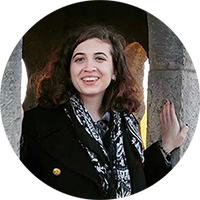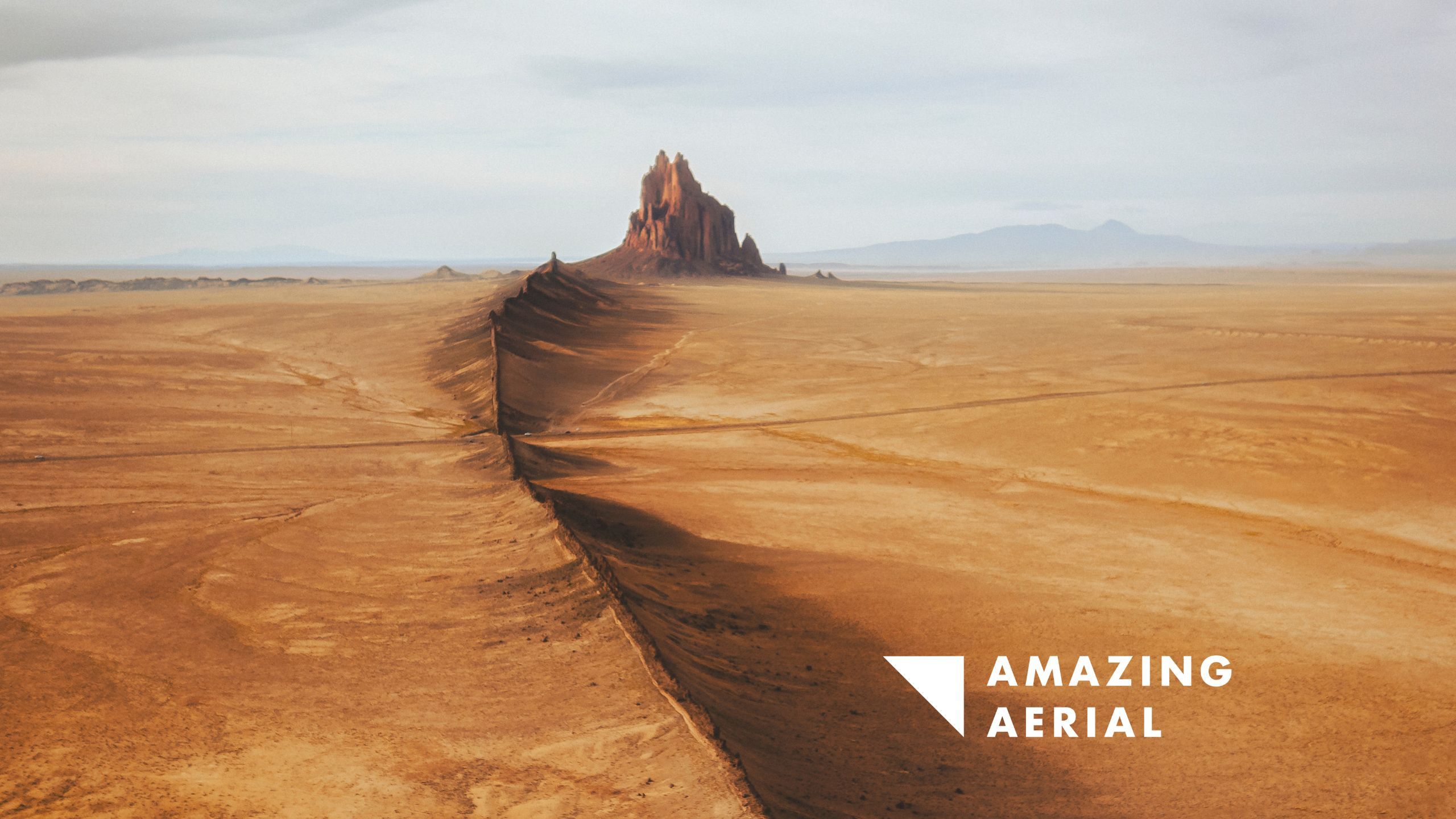One Photographer's Journey to National Geographic
Amazing Aerial team member Matthew Borowick’s stunning landscapes of Iceland have been published in top publications—including National Geographic. He shares his journey to one of the best publications in the world in this article and our podcast.
Apr 04, 2024

Matt’s beautiful landscape images of Iceland, like this aerial view of a volcanic river, fueled his reputation as a top-notch photographer. © Amazing Aerial Agency / Matthew Borowick
 By Rebecca Duras
By Rebecca Duras
Amazing Aerial team member Matthew Borowick has achieved what many photographers dream of: a career photographing landscapes, regular trips to Iceland and other beautiful locations, and the most coveted goal for many photographers—getting published in National Geographic. In a conversation with Amazing Aerial, recorded for our podcast and masterclass series, Matt shared his journey to National Geographic and how photographers can learn from his journey to get published in top publications.
For Matt, even getting to the point of building a career as a landscape photographer took lots of time and effort. His first job was as a paparazzo in New York City working on spec. Although the job was necessary to try and break into the photography world, it was hard for him to balance the demands of the job and his morals, and to retain his passion for photography among the churn of work he wasn’t passionate about. “By the end of that time it actually made me resent photography because I was doing the same thing over and over again,” Matt recalls in his podcast with Amazing Aerial.

This photo of Iceland's highlands was published in the July 2023 issue of National Geographic. © Matthew Borowick
A combination of education and investment into himself helped Matt break out of the churn of paparazzi work and develop a career as a landscape photographer. Even though he had a degree in photojournalism from Corcoran College of Art and Design, he took an additional course at the International Center of Photography. After finishing the course in 2017, he took a trip to Iceland and bought his first drone. When he posted the photos from the trip on social media, he wasn’t prepared for the attention he received. “”I think the interest mostly peaked because most people, myself included, had seen pictures from drones but didn’t know the person that took them,” he recalled. Drones were a relatively new technology at the time, and adapting new tools and technology helped Matt stand out.
Matt’s time at the ICP helped his career in another way, by building his network. “I had a real education in [photography] beforehand so I wasn’t learning a whole lot of things that were new, but what it did do a really good job of providing was photographers that were currently working, or editors that were currently in the field…as well as an incredible network in New York City and globally,” Matt says. His network from the ICP and his friendships with others in the photography world were valuable connections as he built his career. Friends would recommend him for opportunities like working on a documentary that later won awards, or help get his work in front of important editors. In a world as small as the photography world, who you know is sometimes as important as what you know.
While many people shy away from networking because they think it sounds impersonal, or because they think there’s no way they can compete in such a cutthroat industry, Matt has a different perspective. “Networking should be about connecting and sharing with others. It’s about learning from those whose work you admire and the courage to reach out to those that you want to work with, or just grab a coffee,” he says in conversation with Amazing Aerial Magazine. “For tips about reaching out I would say just go for it, ask about getting a coffee or tea. Ask a few questions about the industry, and how a new photographer can enter it.” While some people may not respond, not because of personal dislike but because they may be busy, many will be happy to share what they know or talk shop with a fellow creative.

An aerial view of a volcanic eruption in Grindavik, Iceland.. © Amazing Aerial Agency / Matthew Borowick
Matt’s network is what ultimately brought his work in front of a National Geographic editor. “It goes back a few years,” Matt says in our podcast, explaining that he shot his photo from a plane over Iceland in 2018, but it was only published in the magazine in July 2023. After going to a National Geographic summit event a few years ago, a photographer friend of his introduced him to an editor who was responsible for Nat Geo Travel’s Instagram page. “We set up a Zoom call talking about the kinds of things they would be interested in showing,” Matt recalls. The Instagram page started publishing his work, which led to his role as “the aerial Iceland guy,” one of the page’s go-tos for aerial work in the country. His exposure on the Instagram page caught the attention of a magazine editor, who kept him in mind when a story emerged that fit his work.
Working with a big magazine like National Geographic is a bit more complicated than other work creatives may be used to. Before publishing, Matt had to be well-acquainted with the magazine’s guidelines and what they were looking for, so he would know what to submit and what to shoot on future trips. While he was being published on the Instagram page, he was submitting photos regularly through a third-party site for their consideration.
For the magazine, Matt had to wait for a story to come up that matched his photos, which took several years. Then he submitted a large edit of his raw photos of the highlands (many magazines don’t allow extensive editing before submissions), and the final decision on which photo to pick was in the hands of the editor. Magazine editors have to incorporate layout considerations and other factors before choosing an image, so photographers may be surprised about which images get published and which ones do not.
While photographers should think about what magazine editors might want while out on a shoot, creativity and passion is important. Matt advises photographers to focus on what they enjoy, which will shine through in the quality of their work. His love of polar landscapes shines through in his work from the Arctic region, such as his photos of Greenland’s icebergs, featured on Amazing Aerial Magazine.
“Honestly I really just loved going to Iceland to create work and explore, everything that followed was just by luck and wanting to share everything that I had seen and experienced,” Matt elaborates when asked how he landed on his niche. He also doesn’t mind the fact that Iceland is now popular among photographers. “Now that it is so popular it has actually made getting there more accessible, and of course it has made it harder to stand out as a photographer, but that’s ok. For me it is still about finding those incredible moments and sharing them with everyone I can.” Standing out as a creative doesn’t mean finding the next undiscovered place, but about using craft and storytelling skills to find an unfamiliar angle on a familiar story.
After this publishing opportunity, Matt says that all of the hard work was worth it. “Getting published last summer in National Geographic was huge for me professionally and personally. Not only did it open doors in my photographic life, but it also helped me remember that anything is possible,” he explains. Even as the magazine industry is in crisis and photographers may be moving away from publishing as a revenue stream, this is a reminder that publication work is still important. Even for a photographer as well-established as Matt, publication in a major magazine can still bring many new opportunities.
A path to National Geographic is not as simple as having a dream and then pursuing it. The best way to get there is not to focus on National Geographic at all, but on the other aspects of a creative career that make such opportunities possible: networking, developing your portfolio, and developing new skills. Matt has one final piece of advice for photographers: “Keep shooting, keep connecting.”
To hear more about Matt’s career journey, watch our podcast interview with him here. Matt went more in-depth on the skills that got him this far in his career in our masterclass, available exclusively on the Amazing Aerial website.
Stay updated when we post new articles.
We hate SPAM. We will never sell your information, for any reason.









